Survivor Art: The Journey to Healing
WRITTEN BY: MOTHER JUSTICE / April 11, 2018
Trauma is a process of destruction. I believe strongly that an important part of healing from trauma is to engage in processes of creativity and creation. Crafts such as knitting, crocheting, cross-stitching and sewing are often done by survivors; the comforting familiarity of rhythmic movement can create a trance-like state that helps survivors process and re-order traumatic events in a non-threatening way. The coordinated hand-to-eye movements of these crafts can mimic EMDR (Eye Movement Desensitization and Reprocessing) therapy – one of the more successful types of therapies for people who have experienced trauma.
 Cross-stitches created by Kathy Jones, all of family members. The process of making these art images allowed time to reflect on family dynamics, generational violence, and healing.
Cross-stitches created by Kathy Jones, all of family members. The process of making these art images allowed time to reflect on family dynamics, generational violence, and healing.
Engaging in the arts is another way for survivors to heal, and can be done through many different media, including writing, drawing and painting, and filming/photography. These processes are useful in helping victims share their experiences in a tactile manner, again engaging the brain in safe activity while re-ordering traumatic events. National programs, such as the Clothesline Project and the AIDS Memorial Quilt, not only share victim narratives, but give survivors a venue in which to connect with other survivors in community to share the burden of pain.
This gallery of personal works has allowed me to share my testimony to the greater community, providing validation, healing, surviving and thriving. **CAUTION**: Some of the pieces do include strong language. This is not meant to offend, but to share the very real and common victim experience of oppression and degradation through spoken word.
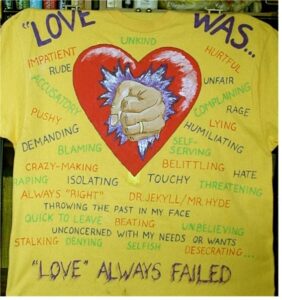
Clothesline Project T-shirt, 2000. A visual representation of what it feels like to be “loved” by an abuser.
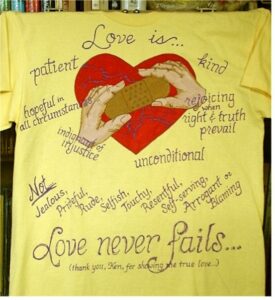
Clothesline Project T-shirt, 2002. My visual depiction of what love is and should be, in communion with a true partner.
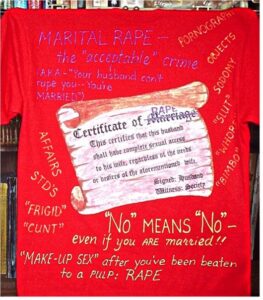
Clothesline Project, 2003. A visual depicting society’s views on marital rape. **Trigger warning for strong language.**

Clothesline Project T-shirt, 2012. Typical abuser accusations, and the court’s response when victims seek legal or outside help.

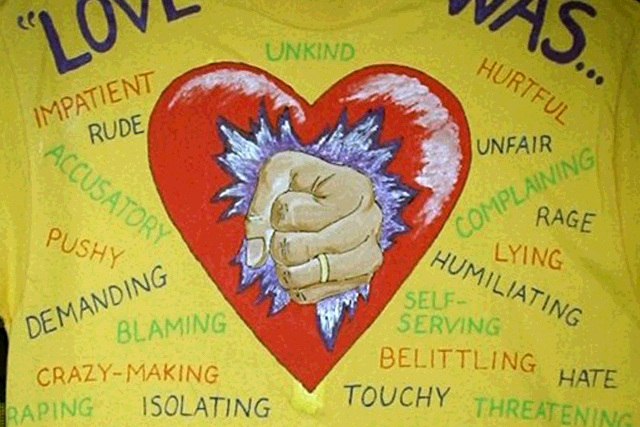
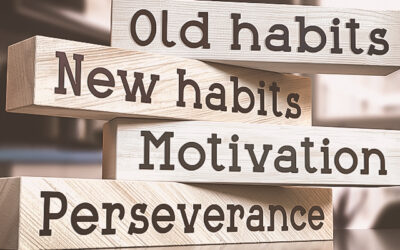


0 Comments